Why KFB?
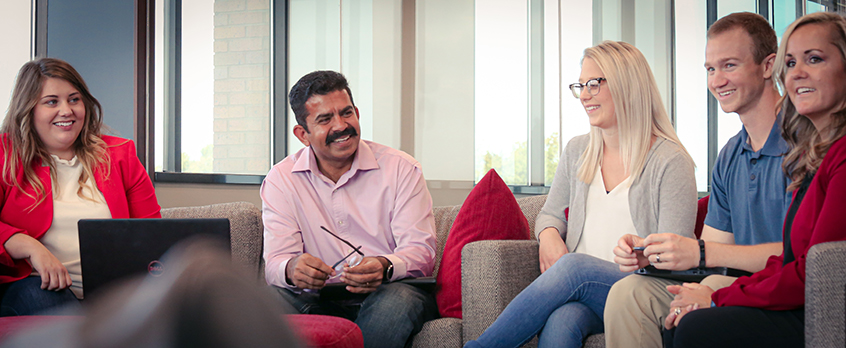
We take pride in a friendly company culture, a healthy work-life balance and our commitment to a happier you.
When you’re here, you’re not just another face in a cubicle. Those who make up the KFB family define who we are. Here are just some of the ways we thank them:
Kentucky Agriculture | Built to Last and Ready for the Future
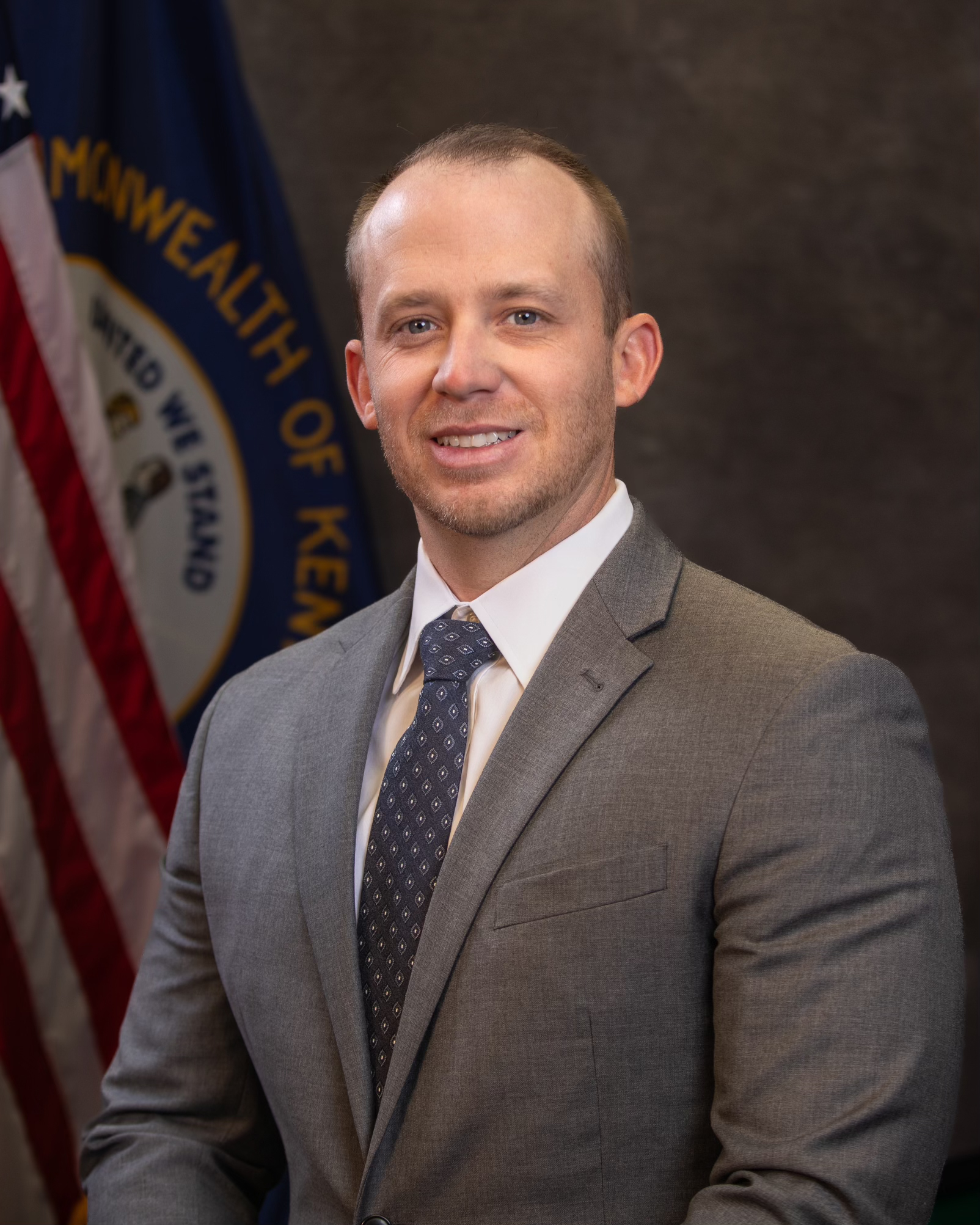
Kentucky agriculture is thriving.
In 2024, we reached a new milestone—$8.3 billion in agricultural cash receipts. That’s not just a number. It’s a clear reflection of the strength and innovation of Kentucky’s farm families. And it represents only a portion of agriculture’s estimated $49.6 billion impact on the state’s economy.
From poultry—our top farm commodity—to beef cattle, where we lead the nation east of the Mississippi, to staple row crops like corn and soybeans that each generate over $1 billion annually, Kentucky agriculture is a story of diversity, resilience, and growth. Nearly half of our total acreage is dedicated to agriculture, and no matter where you go in the Commonwealth, you’ll find it—on livestock farms, in greenhouses, and at bustling farmers’ markets. Agriculture is our way of life. It’s who we are.
But the agricultural landscape in Kentucky looked very different three decades ago. Back then, tobacco was king. It contributed nearly 25% of the state’s annual agricultural cash receipts. It defined small towns, seasons, and livelihoods. From planting to harvest, it marked the rhythm of life in rural Kentucky. Tobacco festivals, parades, and pageants were woven into our cultural fabric.
That began to shift in the late 1990s with the Tobacco Master Settlement Agreement. Kentucky, along with other states, reached a landmark agreement with major tobacco companies. As part of that settlement, Kentucky committed to diversifying agriculture and helping farm families adapt to changing times.
Since the first payments were received, Kentucky has directed half of its $2.8 billion in settlement funds to Early Childhood Development and the Kentucky Health Care Improvement Fund. The other half has been invested in agricultural diversification—thanks to the work of the Kentucky Agricultural Development Board (KADB), the Kentucky Agricultural Finance Corporation (KAFC), and the Kentucky Office of Agricultural Policy (KOAP).
These organizations, and the dedicated board members who serve them, have made it possible for our farmers to expand, innovate, and try new things. We’ve seen major investments in local food systems, agritech, and infrastructure that support a more resilient agricultural future.
Tobacco still plays a role in Kentucky’s economy. We continue to lead the nation in burley, fire-cured, and dark air-cured tobacco production. In 2023 alone, Kentucky tobacco generated more than $200 million in farm-level receipts. It’s a part of our story—and a part of our future.
But it’s no longer the only story.
Today, Kentucky’s agriculture is built on a foundation of innovation and diversification. We’ve embraced change to ensure our farmers not only survive but thrive. And as we mark 25 years of investing settlement funds into the diversification of Kentucky agriculture, we’re better positioned than ever to take on the challenges of the next 25.
We owe it to our farmers, our families, and future generations to keep pushing forward. Because in Kentucky, agriculture isn’t just an industry—it’s a legacy worth protecting and a future worth building.
Jonathan Shell
Kentucky Agriculture Commissioner
President's Column | I Want Our Farming Legacy to Continue for Generations
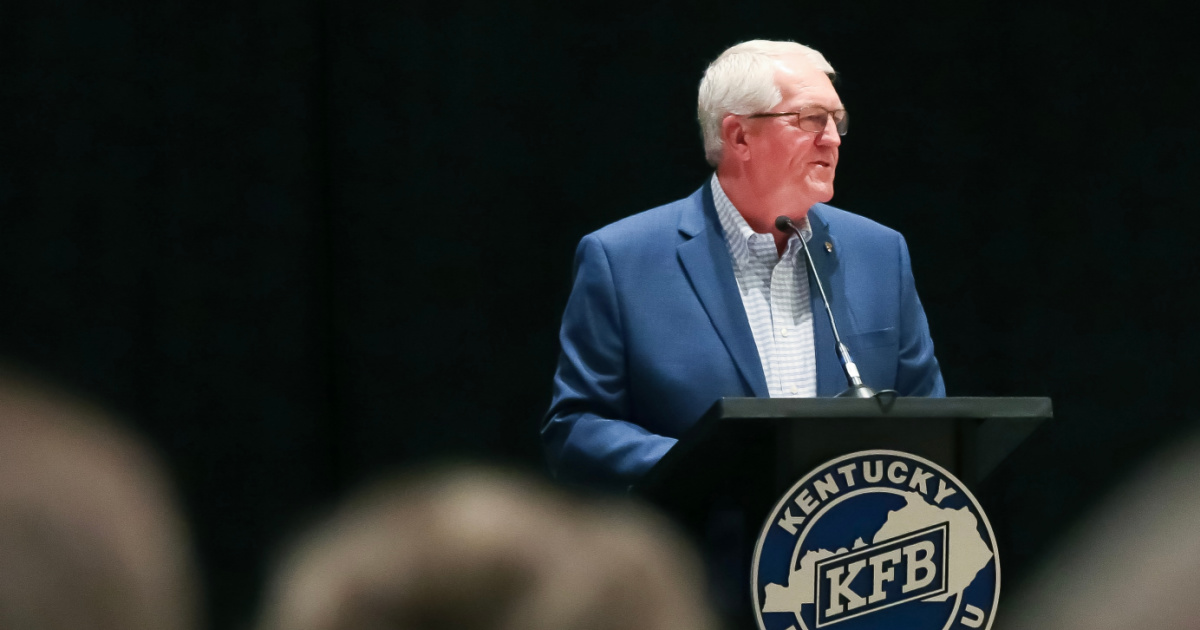
I want our farming legacy to continue for future generations
For many folks, July is a month of relaxing on vacations, family cookouts, and patriotic love for our great nation as we have just celebrated another Independence Day.
With all of the activities that surround us this time of year, it could be easy to forget the generations on the farm who came before us and the sacrifices they made to make our lives better.
In reflecting on the five generations of my family on our farm, knowing their history and how hard they worked to till the ground, grow a crop, raise and care for livestock, and feed themselves—and often their neighbors—gives me a sense of pride and determination. I want our farming legacy to continue for future generations, as most farm families do.
Every day when I step out my front door, looking over our farmland, I’m thankful for the opportunity to be here and do what I do. Granted, some growing seasons are better than others, but each season is a tribute to those who have paved the way for me.
Each crop is a testament to the farmers who worked the soil with a wooden plow and a team of horses or mules. Thanks to our state ag statistics office, I read that over three million acres of corn were planted by Kentucky farmers in 1926.
Can you imagine the labor hours it took to plant that much… way before any of the technology we use today on the farm was even dreamed about?
One main thing all farmers from the past and today have in common is, it’s their life’s work to live and make a living on the farm, no matter how hard it gets or the season they’re having.
They, too, have stepped out their fronts doors and looked over the land and felt the pride of knowing they are farmers. Their value to society—along with that of our service men and women and first responders—cannot be overstated.
Unfortunately, those of us on the farm can often be forgotten by those who don’t have a knowledge of where their food comes from or what it takes to produce it. As long as they see stocked shelves in the grocery stores, how it got there might never cross their minds.
It’s our job at Farm Bureau to constantly remind the people who eat the food we produce and make the laws that oversee our industry just what farming is about; what it takes to get from the soil to the supermarket; what challenges we face to stay on the farm on a daily basis.
Most of all, if they do a little genetic investigation into their own families, they will most likely discover a farmer somewhere in their heritage.
And when they do, I hope they gain a better understanding of why the American farmer is so needed in this world and be thankful for all who have planted, grown, and harvested the crops we enjoy today, and for those who grew the crops that came before us.
My prayer is that each of you have a blessed and safe summer, and that you take a little time to be thankful for all the farm families who, over many generations, have made life possible in this great country.
Eddie Melton, President
Kentucky Farm Bureau
Kentucky Farm Bureau Names 2025 Farmer of the Year Finalists
Kentucky Farm Bureau (KFB) today announced the finalists for its 2025 Kentucky Farmer of the Year award. This annual program recognizes an individual for their outstanding agriculture operations, as well as their service and leadership both on and off the farm.
The three finalists are: Mark Metcalfe of Hopkins County, Scott Porter of Mason County and Mike Wilson of Anderson County. Finalists were selected after a rigorous application process. Applicants must be a Farm Bureau member to be eligible for the award.
“Each of these outstanding farmers is very deserving of this honor,” said KFB President Eddie Melton. “Mark, Scott and Mike all show an unwavering commitment to excellence in agriculture, efficiency in their farming operations, and a high level of business and financial expertise. While there can only be one award given, we believe they are all winners in our industry.”
The finalists will be recognized during KFB’s Ham Breakfast at the Kentucky State Fair on Aug. 21. The winner will be announced on Oct. 2 and then recognized during the organization’s annual meeting in December.
MORE ABOUT THE FINALISTS
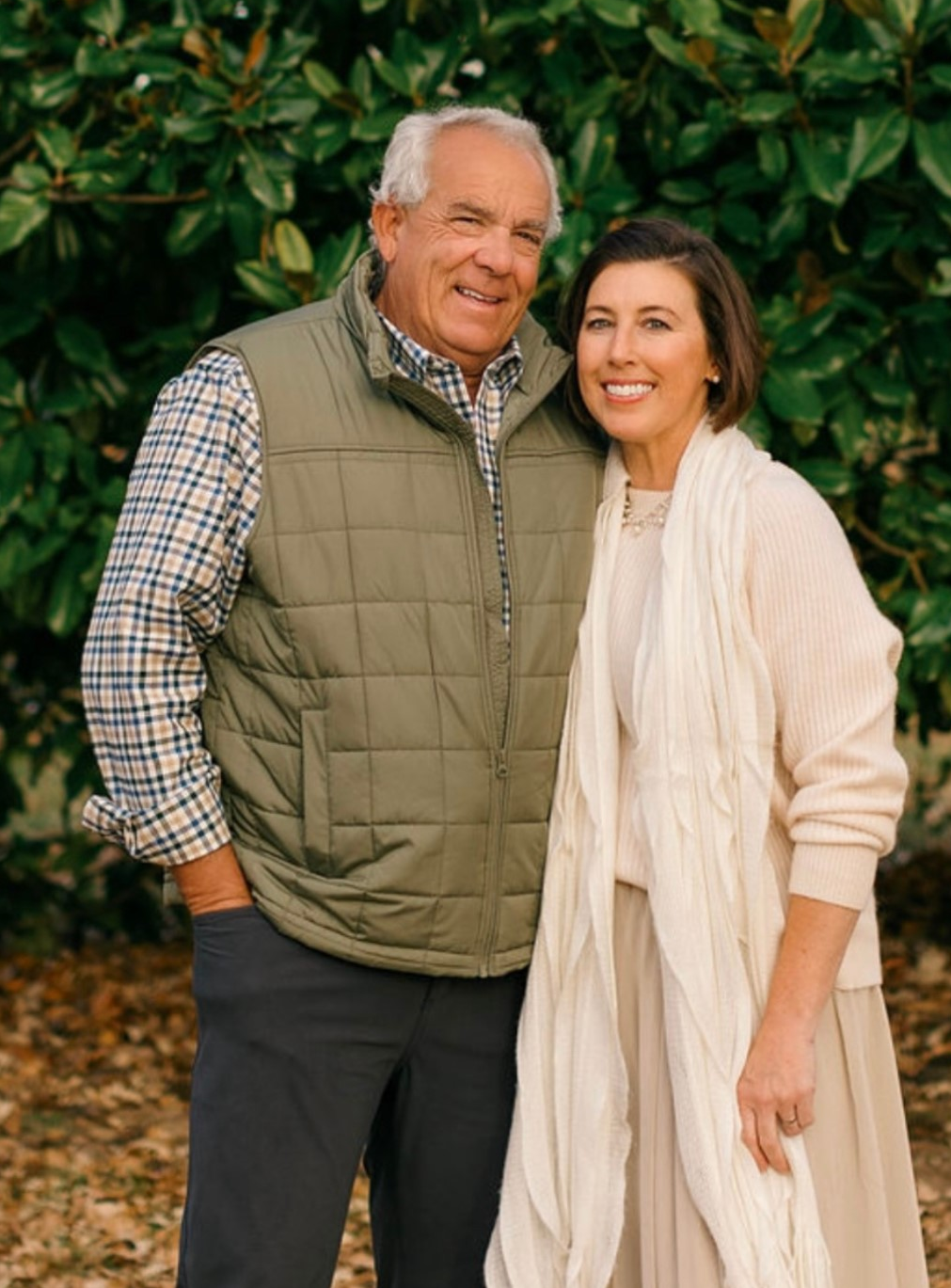
Mark Metcalfe and his wife, Penny, operate Metcalfe Florist & Pleasant View Greenhouses in Madisonville. Operations include 20 wholesale greenhouses, a garden center, commercial landscaping business, and a florist/gift shop located on about 100 acres. The Metcalfes have spent years updating the infrastructure of the farm’s greenhouses, originally built by Mark’s grandfather. These improvements maintain the heritage and integrity of the original business while also utilizing new technology such as installing solar panels for better energy conservation.
“We look for ways to diversify in the areas we are already working, increasing efficiency, and production growth within our physical footprint. We believe this will bring the best agriculture tourism experience to our county,” Mark says.
He began working on his family’s farm at age 10 and has never looked back. The couple’s two children also worked on the farm when they were young but have since moved on to other careers.
Just like many others in the agriculture industry, Mark has faced challenges like labor shortages and adverse weather conditions, but he’s met them head on to find solutions. And, even after decades in agriculture, the Metcalfes are still excited about the future of their operation.
“Penny and I enjoy each day as our workplace evolves,” Mark says, adding that his wife’s “ideas and talents keep us always changing and moving forward. When you love what you do, it is hard to ever think about doing anything else.”
Through all his efforts, Mark is well on his way to achieving his goal of “bringing a fresh and modern feel to all of our farm’s practices and facilities,” while maintaining its legacy.
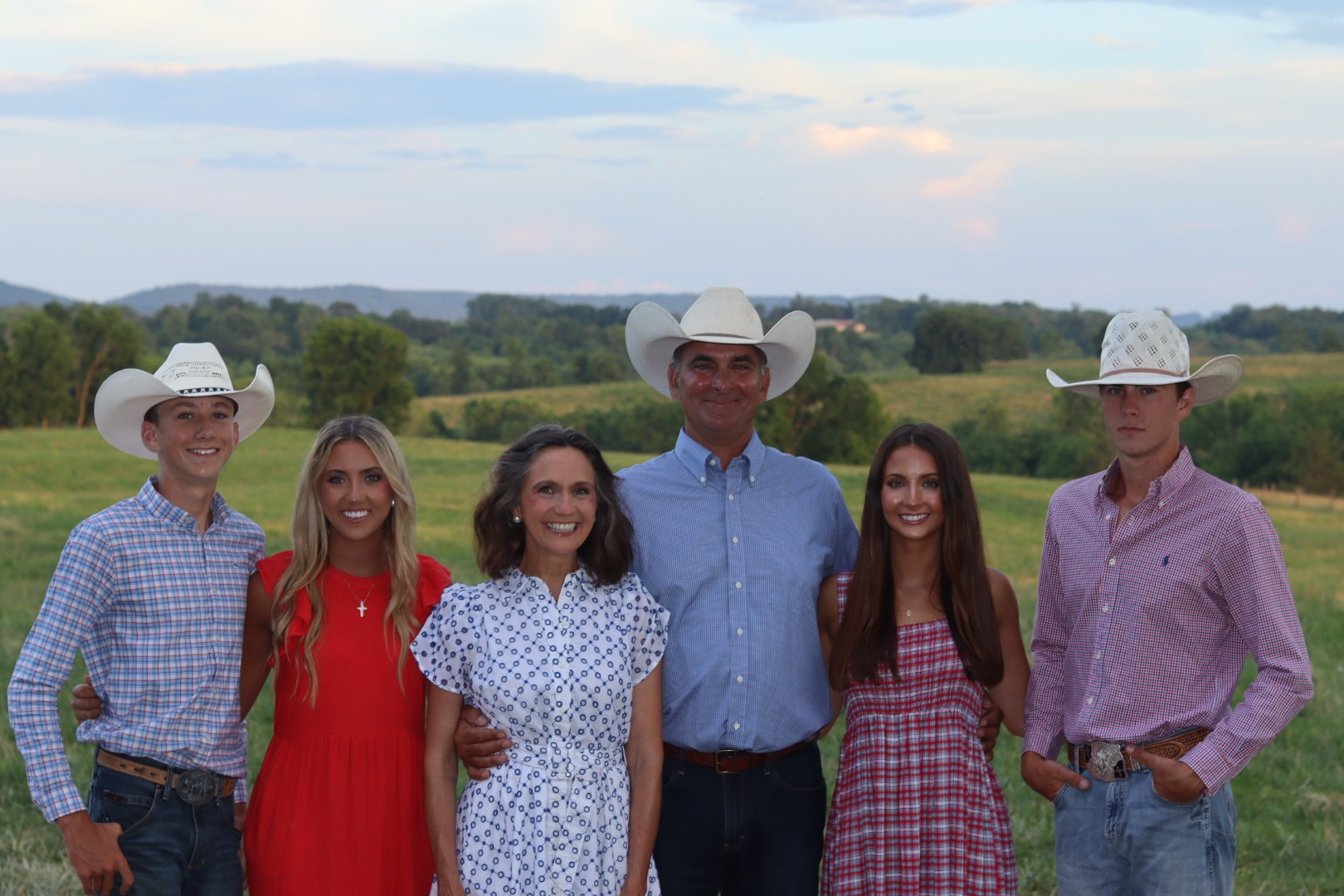
Scott Porter operates Springdale Stock Farms LLC on 1,775 acres of pastureland in Maysville. A full-time cattleman, his 900-head commercial beef cow herd is bred to high-quality Angus bulls to produce top-tier steers and replacement females. Over the last five years, he has reduced the scale of his business to focus solely on his own cow-calf herd. For the previous 20 years, Scott operated a combination of cows and purchased calves, and at its peak, the farm reached 5,000 head per year.
Scott says he gained valuable experience and knowledge during that time. “These years spent in a fast-paced buy-and-sell environment provided an opportunity to experience and learn many aspects of the cattle business, which I don’t think many producers ever do,” he says. “The successes I had also brought financial security to my family and a debt-free cattle operation today.”
Today, Scott is focused on continuous improvement, which includes further streamlining his operation. To increase the carrying capacity for cattle on his land, he has completed soil testing, developed some rotational grazing pastures and cleared and reseeded large areas of the farm.
Scott is also focused on improving efficiency from a labor standpoint: “We need to do more with less.”
Scott and his wife, Mary Ann, have four “healthy, happy and intelligent children.” Their 21-year-old son recently joined them at the family farm full time. “He brings a great work ethic, abilities and an understanding for the care of cattle that only people growing up in the business have,” says Scott.
Scott is passionate about helping to ensure that younger generations of cattlemen and women succeed. “I want to share 20-plus years of education in backgrounding and finishing cattle,” he says. “Making a living buying and selling cattle works better if you understand what you bought today and its potential down the road, especially at harvest.”
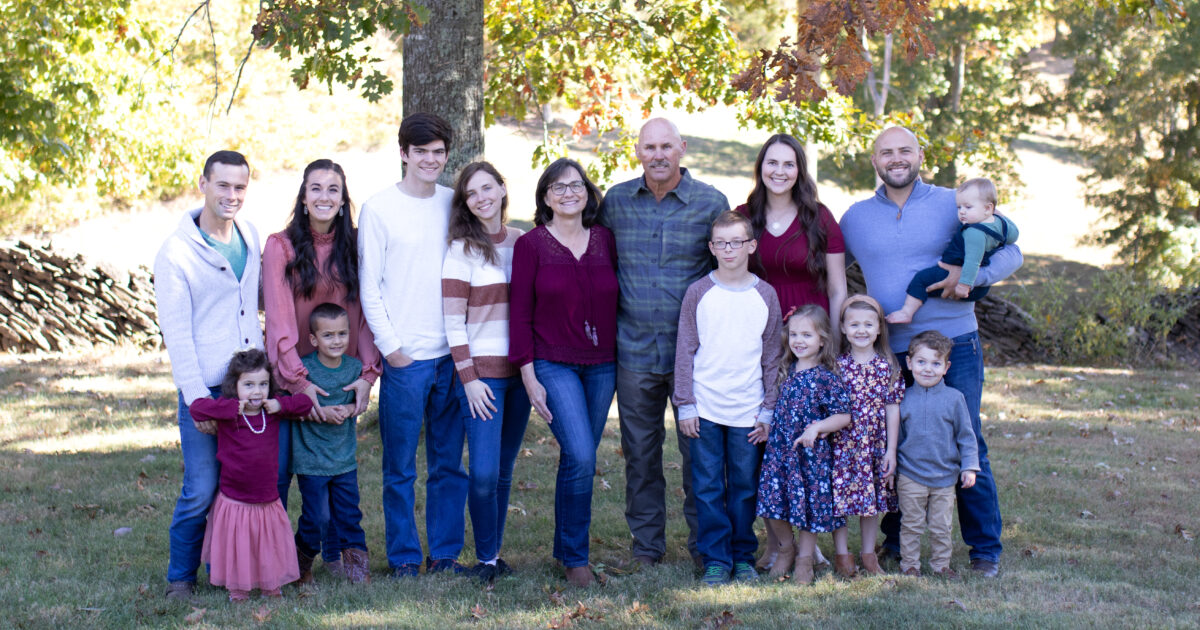
Mike Wilson operates Whispering Hills Farm, a commercial beef cattle and hay production farm on more than 250 acres in Lawrenceburg. He has strategically expanded his farm over the years, acquiring adjacent land and purchasing dedicated hay fields in neighboring Franklin County. Further expansion in the early 2000s allowed him to increase his cattle herd while also contributing to the preservation of agricultural land in the area.
Mike’s deep-rooted passion for agriculture began in 1969, when he started farming alongside his father, raising and milking dairy cattle. “This early immersion in the daily rhythms and responsibilities of dairy farming laid the foundation for my lifelong connection to the land and livestock,” he says.
He pursued opportunities outside of agriculture after graduating high school in 1976 but returned home in 1999 to purchase his family farm and embark on building his own beef cattle operation.
Specializing in high-quality commercial breeding stock, Mike primarily markets both open and bred female heifers through private treaty sales. “This personalized approach allows me to directly connect with buyers, understand their specific needs and showcase the superior genetics and potential of my heifers,” he says.
Demonstrating a commitment to continuous improvement and sustainable practices, Mike actively participates in University of Kentucky field trials focused on herbicide application and the establishment of diverse grass species to enhance biodiversity within his hay fields. “This proactive engagement is crucial to my pursuit of optimal hay quality, as a diverse mix of grasses contributes to a more nutritious and resilient forage,” he says.
Mike Wilson's dedication to environmental stewardship has been recognized through numerous prestigious awards, culminating in the esteemed 2024 Leopold Conservation Award, which honors landowners who demonstrate exceptional dedication to land health, natural resource management and biodiversity on their working farms. He was also named the 2025 National Cattlemen's Beef Association Environmental Stewardship Award Program regional winner.
Mike and his wife, Tamela, have four children, whom he is teaching the intricacies of the farming operation, with the intention to provide them with the skills to potentially take over the farm in the future.
Search
Enter some keywords below to search our site for content.
You could also try our site map to find pages.
We're Closer Than You Think!
Doing right by you because we live right by you. Find a Kentucky Farm Bureau county office or agent. Search by:
Kentucky Farm Bureau Federation
Kentucky Farm Bureau is a grassroots organization dedicated to serving our membership family and their communities. As the Voice of Agriculture, we identify problems, develop solutions, promote economic success, and enhance the quality of life for all.
Big On Commitment
Since 1943, people across the state have put their trust in Kentucky Farm Bureau Insurance. Today, we insure more than 474,000 Kentucky families and businesses. We have insurance agents in all 120 counties protecting what's important to our fellow Kentuckians, from farms and fishing boats to minivans and mobile homes.
With us you're not just a client, you're a member—and we treat you like one. You’ll receive all kinds of great benefits, like discounts on everything from hotels to security systems, and a company and local insurance agent committed to you.
Statement from KFB President Eddie Melton on Recently Passed Capital Gains Tax Relief
Kentucky Farm Bureau President Eddie Melton commented today on the inclusion of capital gains tax relief to help keep agricultural land in production in the recently passed One Big Beautiful Bill Act.
“We are excited to see the inclusion of capital gains tax relief in the One Big Beautiful Bill Act. This is a direct result of Senator Mitch McConnell’s efforts on the issue, which includes his legislation, the Protecting American Farmlands Act. This is a crucial first step in providing America’s farmers capital gains relief while incentivizing keeping farmland in the hands of active farmers. This will provide farmers with another tool when looking to transition their land while also addressing the drastic loss of farmland across the country. Senator McConnell has long been a champion for Kentucky agriculture, and this legislation is a testament to his commitment to the American farmer and the future security of America’s food supply.”
About Us
OFFICERS
| President | Glenn Burton | |
| Vice President | Tim Dalton | |
| Secretary/Treasurer | Grady Steele | |
| Farm Bureau Women's Chair | Sharon Denney | |
| Young Farmer's Chair | Ann Margaret Hughes |
DIRECTORS
| William Stevenson Allen | Monticello | |
| James Kelsay | Monticello | |
| Jimmy Martin | Monticello | |
| Bill Roberts | Monticello | |
| Jack Roberts | Monticello | |
| Dan Vickery | Monticello |
2025 Certified Farm Market Tour Agenda
Down the Backroads | A Pedal Down Memory Lane
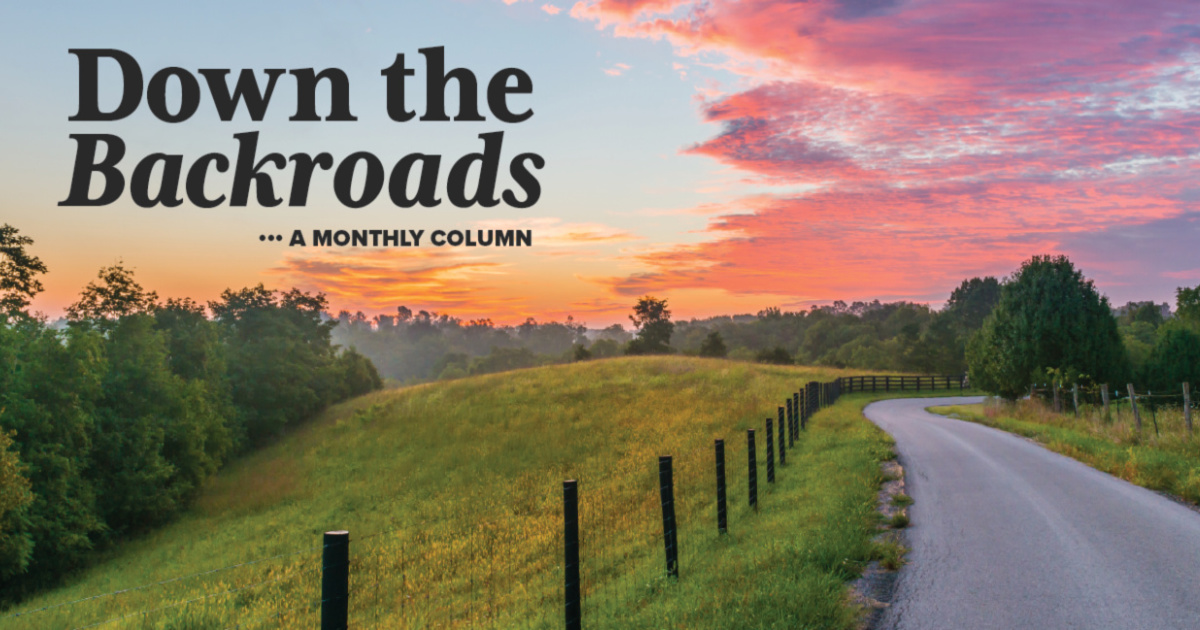 I have often spoken of the camping trips my wife and I take in our RV. I think glamping is actually the way to describe it. Regardless of the terminology, it is a time to relax and unwind from the real world. I especially enjoy mornings when I can sit outside with my favorite camping chair and savor my coffee while listening to the natural surroundings.
I have often spoken of the camping trips my wife and I take in our RV. I think glamping is actually the way to describe it. Regardless of the terminology, it is a time to relax and unwind from the real world. I especially enjoy mornings when I can sit outside with my favorite camping chair and savor my coffee while listening to the natural surroundings.
During a recent trip, the serenity of one peaceful morning was somewhat interrupted when several children, and at least one adult, began riding by on what appeared to be electric scooters.
I know there is a name for these, but just what their technical name is, I do not know. Now before you think I'm just being a grumpy old man, hear me out: It wasn't that these folks were making a lot of noise because they were not.
But what caught my attention was the fact that, while these contraptions looked like the old-fashioned scooters of my day, they seemed to be completely motorized, I assumed battery powered. I am surely behind the times when it comes to such things.
I became more enthralled with these modern-day scooters, the more of them I saw that day. And it seemed no matter where I went in the campground, there were more of them.
I believe every young person in the place had one of these fancy scooters or a motorized bicycle of sorts. I began to wonder if any of them had ever experienced the manual scooter version or a real bike you pedaled with your feet instead of charging with a cord.
I suddenly was taken back to when I got my first bicycle. My brother and I got matching stingray bikes for Christmas one year. For those who may not know what I’m talking about, these bikes had high handlebars and banana seats. Ours were green with a metallic-looking seat color and a wider-than-normal back tire.
We thought they were the coolest, and while we had to wait out winter that year, once spring and summer arrived, we rode those things daily… and sometimes all day.
My favorite bike memory was the time we built ramps from unused wood in the garage and cinder blocks. We had just seen a show at a local county fair where professional drivers wowed the crowd with numerous stunts, including launching their cars through the air on ramps.
We thought we would do the same with our souped up stingray bikes! And we did. We must have jumped those bikes a thousand times, each time going faster and jumping higher. I had never had so much fun. Momma wasn’t too happy when she realized what we were doing, and it was by the grace of God, we didn’t break any bones. But we built a memory in those hot summer days that suddenly jumped back into my brain during our camping trip.
I do not advocate that anyone becomes a stunt driver on their bikes, especially with those electrical ones, but it was awfully nice to take a visit back to my boyhood riding those stingrays, down the backroads.
Kentucky Cattle Auction Report - July 1, 2025
Locals Craft World-Class Protective Gear Right Here in KY
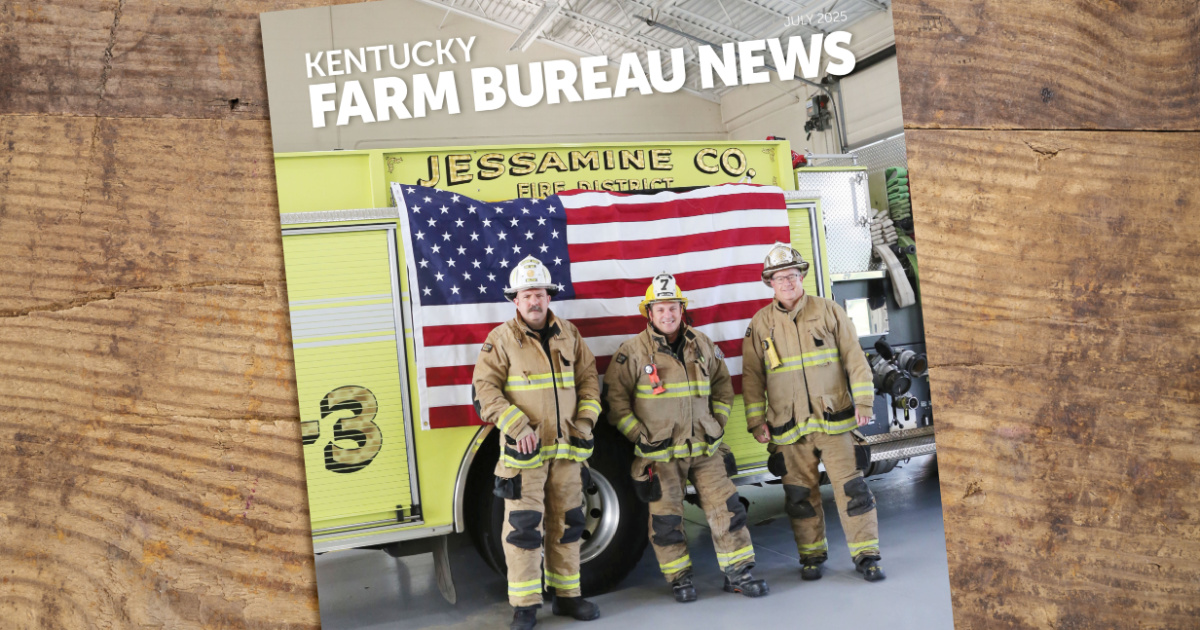
LION Group, Inc.'s V-Force turnout gear was recently named the 'Coolest Thing Made in Kentucky' in tournament-style contest
It turns out that the coolest thing made in Kentucky is used in some very hot situations. LION Group, Inc.’s V-Force® turnout gear, which protects firefighters in the U.S. and across the globe and is manufactured in the Kentucky communities of West Liberty, Beattyville, and Hazel Green, has won the Kentucky Association of Manufacturers’ (KAM's) 2025 Coolest Thing Made in Kentucky Tournament presented by Kentucky Farm Bureau Insurance in a two-month long contest that garnered more than 320,000 votes.
LION V-Force turnout gear defeated Texas Roadhouse Mini Rolls, made by T. Marzetti Company in Horse Cave, Kentucky, by a 57%-43% margin in the tournament finals.
“Since 1959, Kentuckians have been sewing and distributing LION’s high-performance uniforms and protective garments to first responders around the world. But our history is not just about nearly 70 years of sewing products in Kentucky; it's about the dedication, passion, creativity, and hard work of our more than 600 Kentucky-based manufacturing team members,” said Steve Schwartz, CEO and fourth-generation family owner of LION Group. “They hand-sew each set of V-Force turnout gear we ship to firefighters that protects them in extreme conditions so they can protect their communities. Knowing that what they create is cherished and celebrated as the 2025 Coolest Thing Made in Kentucky fills all of our hearts with immense pride.”
Now in its third year, the annual online voting, bracket-style tournament gives Kentuckians the opportunity to pick their favorite from among the thousands of world-class products manufactured in the commonwealth.
A FIRSTHAND PERSPECTIVE
Alan Perkins has been an employee at LION Group, Inc. since 1985, making him one of the longest tenured employees at the West Liberty facility. But perhaps more important is the fact that Perkins, during many of these years, has also been a county first responder.
“I was born and raised in Morgan County, and I started working at our local ambulance service in 1994,” he said. “I’ve also been a member of the county’s rescue squad.”
Perkins has worn LION’s gear during rescue moments and knows firsthand how important it is to keep frontline workers safe.
“I’ve worn this gear and been protected by it,” he said. “And by working here and seeing all the places our gear goes to, I know it’s protecting those firefighters, too.”
Perkins added that everyone working for LION understands that the gear they are making will help save the lives of first responders.
Diane Best is the site leader at LION’s Beattyville facility. She has been with the company for more than 40 years.
“The company is family owned and has been in business for 127 years, with its headquarters in Dayton, Ohio,” she said. “There are three facilities in eastern Kentucky, and each of the plants have different jobs all connected in getting the finished garments ready to ship to firefighters and first responders around the world.”
Best added that V-Force was created to give maximum comfort and mobility to firefighters who wear it.
“The comfort and mobility features that are built into the gear actually allows firefighters the ability to work comfortably,” she said. “When it was created, it was built to move like the human body moves.”
The Jessamine County Fire Department uses LION V-Force gear. Jason Walton is Fire District Assistant Chief. He said it is great to have such important firefighting gear made right here in the state.
“The departments of Kentucky are lucky to have a manufacturer like LION that knows the industry so well and has designed and tailored a set of personal protective equipment that matches what our needs are,” he said. “These are built to the highest standard and are above the National Fire Protection Association (NFPA) recommendations. They build something that is far superior to just the minimum standard.”
When asked if he thinks his fellow firefighters are safer using the LION Group Inc.’s V-Force turnout gear, his reply was, “Most definitely.”
IFAL is 40 and Still Going Strong
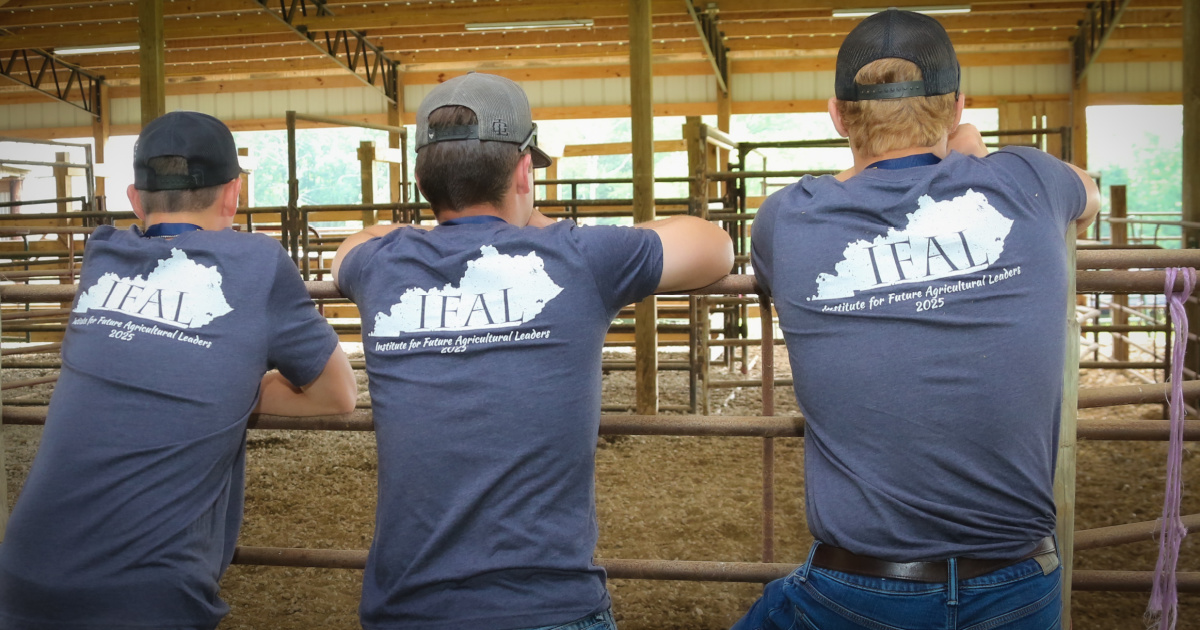 In 1986, Martha Layne Collins was governor, Ferdinand won the Kentucky Derby, a gallon of gas averaged 86 cents, and Kentucky Farm Bureau (KFB) was about to embark on a youth program that would help shape the future of agriculture for decades to come.
In 1986, Martha Layne Collins was governor, Ferdinand won the Kentucky Derby, a gallon of gas averaged 86 cents, and Kentucky Farm Bureau (KFB) was about to embark on a youth program that would help shape the future of agriculture for decades to come.
The Institute for Future Agricultural Leaders (IFAL) brings rising high school seniors to a five-day event to educate them about the organization, acquaint them with the top agriculture issues of the day, and help them begin their leadership journeys.
Forty years later, the program remains as strong as ever and boasts a who's-who of today's top state leaders in agriculture, local and state government, and county Farm Bureaus, spanning all 120 counties.
Taylor Nash, IFAL class of 2015, now oversees the program as the KFB Federation’s Director of Young Farmer programs. He said the goal of IFAL is to help students see how they can fit agriculture into their future through a variety of activities.
“The students come to spend a week with us at one of our participating universities (the University of Kentucky and Murray State University) to help expose them to college, experience what it's like to be on campus, help them see how they can fit agriculture into their futures by taking them on ag-related visits and participating in agricultural discussions.”
Nash noted the importance of a program like IFAL as a way to get young people involved in Farm Bureau, as well.
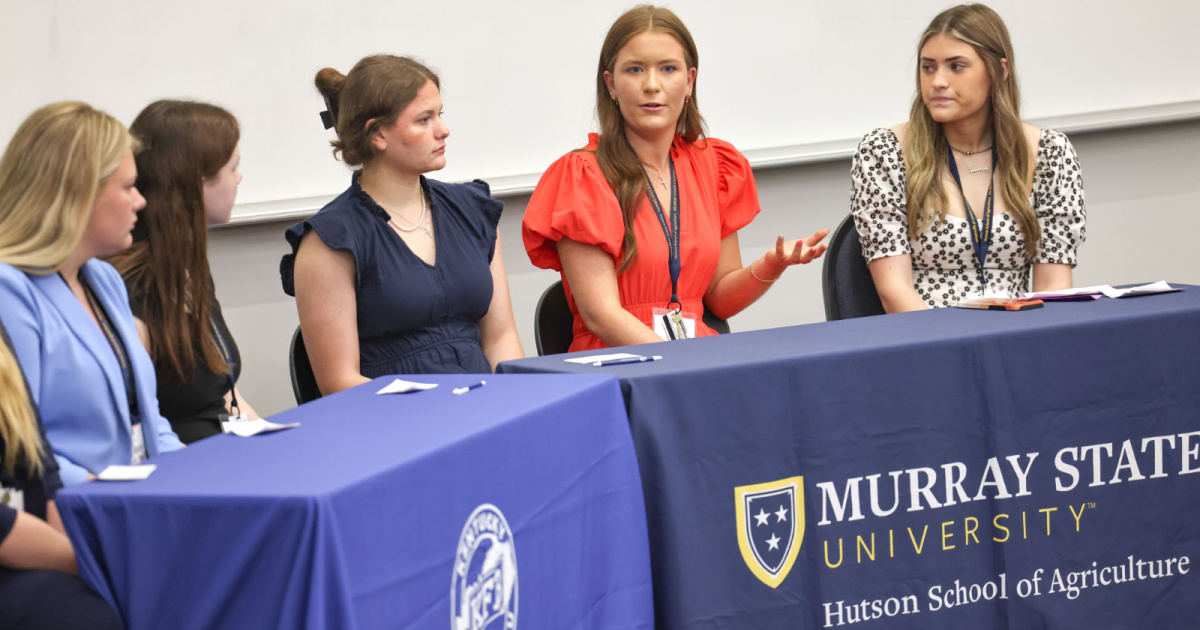
“These students are the future of our industry, and, in many ways, they're already leading it at their age, and so we want to find a way to help engage them and help set them up with the resources that come with being involved with KFB,” he said.
Like so many others who have become IFAL alumni, Nash said his experience made a lasting impression on him.
“As a student, I loved it and it was the first time that I ever left home by myself,” he said. “I'd been involved in FFA and gone with my school to various places and events, but this was the solo trip for me and where I was pushed out of my comfort zone to get to meet new people. And I would've never guessed the people that I met there. Now I get to work with them in different capacities.”
Nash noted that many people who were involved in his IFAL group have gone on to leadership roles at all levels and serve as resources for him in his present position.
A FAMILY TRADITION
LaRue County Farm Bureau President Jeremy Hinton, a 1991 IFAL participant, began a tradition for his children, as two of them have now gained the title of IFAL alumni. Jacob attended in 2021, while Joslyn just completed her time as a participant.
Jeremy said the program helped shape his college experience and steered him toward agriculture in Farm Bureau.
“At the time, I wasn’t for sure about what college to go to or what I wanted to major in, but attending IFAL helped to solidify my decision to attend UK and major in agriculture,” he said. “It also planted seeds for my future in Farm Bureau.”
Jeremy, who also serves as Chair of the Kentucky Horticulture Council, owns two farm markets as part of his overall farming operation, which includes traditional crops such as soybeans and tobacco.
“I hope my children have had the same experience I did while attending IFAL, to motivate them to be involved in the agriculture industry in whatever way they are able,” he said, “I know they have made friendships that will last them a lifetime.”
Joslyn said having a brother and father who attended IFAL helped her to know more about the program.
“I knew quite a bit about IFAL, and I think it was a good opportunity for me,” she said.
Joslyn already has some farming business experience growing mums for her family’s markets.
“I think that the people I'm meeting here are definitely going to stay in touch in the future and be of help with whatever I decide to do,” she said. “Just making those connections with people around the state is important.”
While many programs of this sort come and go over the years, IFAL has stood the test of time.
“I'm not surprised this program has endured through time, and when I think about my experience as a participant and just knowing how many students have gotten that opportunity since,” Nash said. “IFAL has had such an impact on so many over the 40 years of the program, and it has shaped Kentucky agriculture throughout the years and will continue to do so for years to come.”
Nash added that there are many people and organizations that have helped to contribute to the success of IFAL.
“Honestly, I think it's the people we have who are a part of it and the community support that we have,” he said. “We can't go out and create this experience without the farmers and the universities that we get to work with. We have a lot of people here that believe in the future of ag and it starts with these students, and every year we renew that excitement for what's going to come for agriculture through IFAL.”
Being Heard in D.C.
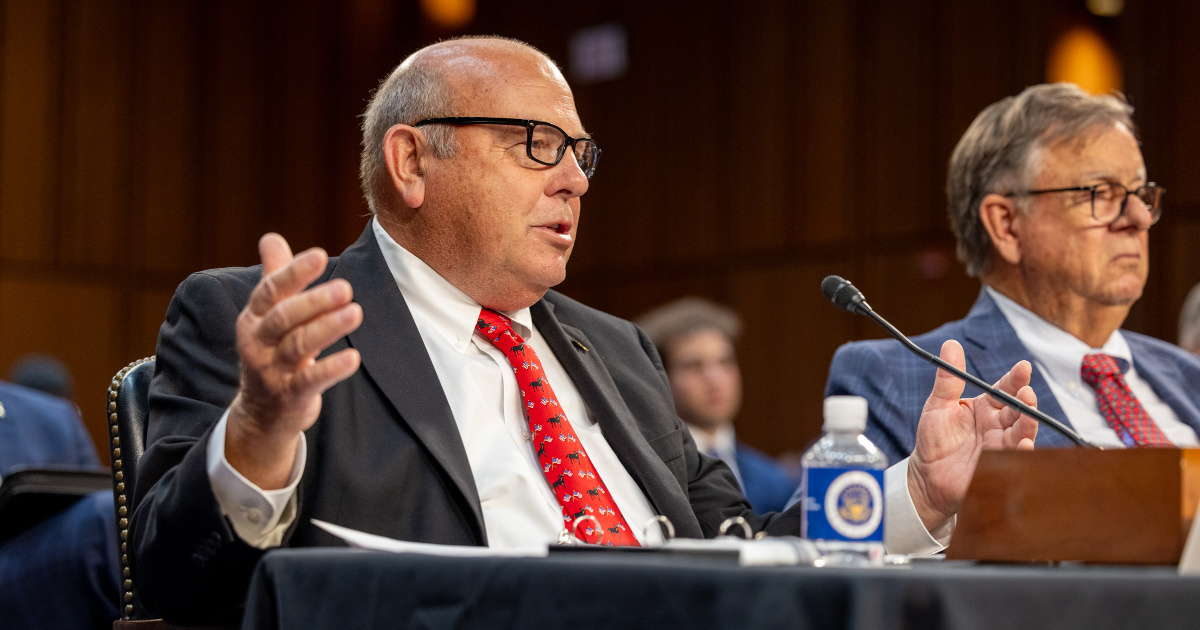
Farm Bureau advocates for American farmers in front of key Senate committee
American Farm Bureau Federation President Zippy Duvall recently testified in front of the Senate Special Committee on Aging to discuss the issue of an elderly farmer population and what can be done to bring a new generation to the agriculture industry. The hearing was entitled, “The Aging Farm Workforce: America’s Vanishing Family Farms.”
Duvall was joined by Jim Alderman of Alderman Farms in Florida; Aaron Locker, managing director of Kincannon and Reed, an executive search and leadership development firm that works with organizations that feed the world; and Dr. Chris Wolf, E.V. Baker Professor of Agricultural Economics and Director of Land Grant Affairs at Cornell University.
“As I travel to farms across this country, I see a lot of gray hair, and while the wisdom of older generations is critical, we must ensure that we are making the way for young and beginning farmers to fill our boots,” Duvall said. “As this committee has identified, there are many challenges facing the agriculture community, but there are also opportunities for Congress to support young and beginning farmers, including with a new Farm Bill.”
Duvall spoke of the need for a modernized, five-year Farm Bill earlier this year before the Senate Agriculture Committee.
“Farmers and ranchers have faced unprecedented volatility since the 2018 Farm Bill, making it harder for many to hold on,” he said in this most recent Senate hearing. “The 2022 census showed the loss of just over 141,000 farms in 5 years … that’s an average of 77 per day.”
Duvall added that, with rising interest rates, higher energy prices, and unchecked supply costs, farmers will plant one of the most expensive crops ever.
“And many will face the tough decision of whether to plant at all,” he emphasized. “This is why the Farm Bill’s Title I safety net is critical.”
In his opening statement, Committee Chair Rick Scott (R-FL) said Congress has not always done right by our farmers.
“The major legislative package aimed at supporting farmers and agricultural workers, the Farm Bill, hasn't passed since 2018,” he said. “This is especially harmful for farmers who have suffered with rising prices for the last four years under the last administration.”
Scott added that while President Trump is having success in breaking down prices and fighting to support American farmers, he needs Congress to act as well, and passing a good Farm Bill is the right place to start.
“Otherwise, we will continue to use outdated information, which compounds the harm done by other economic and regulatory factors,” he said. “As a result, the burden increases on our aging farmers who want nothing more than to see their farm continue in trustworthy hands but are finding it harder and harder to find someone to carry on their legacy.”
The committee’s ranking member, Kirsten Gillibrand (D-NY), said, “Our farmers provide an accessible and abundant supply of food to our whole nation, but with increased consolidation and more farmlands being converted to non-agricultural uses, we are sending ourselves down a very risky path. Our duty in Congress should be to support our farmers whatever way we can.”
Each presenter spoke on several issues facing farmers and the ag industry, primarily focusing on the need to get more young farmers involved to alleviate some of the challenges with an aging farmer population.
"If we want to sustain agriculture in America, we need to smooth the path between generations, which means investing in beginning farmer programs, expanding technical assistance, and offering incentives like estate planning support and making it easier to transfer farms without losing the land or the legacy," Alderman said.
Locker noted several suggestions on how Congress can help address a growing shortage of younger agricultural leaders. Passing a strong, fully funded Farm Bill was one of those suggestions.
“A comprehensive Farm Bill is the foundation of long-term stability for the agriculture industry,” he said. “It empowers rural development, research development, research institutions, and workforce training programs to invest in the future with confidence.”
Duvall added that Congress needs to recognize farmworkers as essential to feeding and fueling our country. It’s time to modernize our outdated system, and only Congress can meaningfully do that.
“A country that cannot feed its people is not secure,” he said. “In order to meet the growing demand for food, fiber, and renewable fuel at home and abroad, we must ensure the continued strength of our farming and ranching communities.”
After his opening statement, Duvall took questions from lawmakers on several issues, including the Adverse Effect Wage Rate, which sets the hourly rate for H-2A guestworkers, the mental health crisis in rural America, international trade deals, and estate taxes. Duvall noted that if farmers are forced to sell their land, the land comes out of production, resulting in it never returning to production.
“There’s so much competition now for land, it prevents young farmers and beginning farmers that want to go into agriculture, God help them, have a difficult time finding that land to do that,” he said. “Availability of land, availability of money, loans, is one of the biggest stumbling blocks young farmers, beginning farmers have going into the business.”
Fireworks safety: 4 keys to having a dynamite Fourth of July

Bottle rockets, Roman candles, and sparklers are all synonymous with one thing in America: the Fourth of July. There’s no doubt that fireworks are fun, but they’re also the culprit of more than 10,000 hospital visits in the U.S. each year. This holiday should be a celebration of our country’s independence, not a reason to go the emergency room. Educate yourself on the rules and risks of fireworks before embarking on your own backyard pyrotechnics show.
- Handle with care.
Each year, thousands of celebrations fizzle out early due to injuries. Mishandled fireworks can result in severe burns, fractures, disfigurement or, worse yet, death. Even a sparkler, usually handed to small children and thought by many to be harmless, burns at 1,200°F. To put that into perspective, wood burns at 575°F and glass melts at 900°F. The tip of a sparkler is hot enough to easily cause third degree burns, thus accounting for more than one-fourth of emergency room fireworks injuries.
Follow these tips to keep you and your family safe while handling fireworks:
- Buy your fireworks from a licensed dealer and read all instructions before lighting. Don’t experiment with homemade fireworks. Sure, they might provide a few seconds of enjoyment, but that’s not worth the risk of injury, scarring or even death that may occur as a result.
- Alcohol and fireworks aren’t a good recipe. Choose an adult who is not consuming alcohol to be the designated fireworks handler.
- Always supervise the kiddos! The risk of fireworks injury is highest for young people ages five to nine.
- Keep a bucket of water on hand and make sure there’s a water hose connected nearby.
- Douse the duds! Wait 20 minutes after attempting to light a dud and soak it in a bucket of water. Never try to relight fireworks that don’t work the first time around!
- Light one firework at a time.
- Never point fireworks at people.
- Keep a safe distance when watching fireworks.
- Light the sky, not your property.
It’s not uncommon for fireworks to send wooded areas, homes and automobiles up in flames. Fire departments annually respond to an average of 18,500 fires caused by fireworks, including 1,300 structure fires, 300 vehicle fires and almost 17,000 outside and other fires.
Fireworks-related fires cause at least $20 million in property loss each year. Bottle rockets or other rocket-type fireworks are an especially large risk to your home, as they can land on rooftops or wedge within a structure while still retaining enough heat to cause a fire.
- Know the law.
A little Fourth of July fun can turn into a run-in with the police in a flash. Laws and ordinances regarding fireworks vary from state to state, and even city to city. To view each state’s fireworks laws by the American Pyrotechnics Association, click here.
- Don’t forget Fido.
While most humans find the earth-shaking boom of fireworks to be enjoyable, most pets do not. In fact, so many frightened pets try to escape the sights and sounds each Fourth of July that lost pet intakes at animal shelters skyrocket. Remember that pets are much more sensitive to the sights, sounds and smells of the holiday than you are. Keep them indoors and away from fireworks displays. If possible, turn on a TV or radio to help drown out the commotion. If your pet seems particularly sensitive to the celebrations, consult a vet who can offer calming techniques and medications to alleviate your pet’s anxiety.
If you keep these tips in mind, your Independence Day celebration will be a blast!
>> At Kentucky Farm Bureau, we’re just as invested in your home as you are. This Fourth of July, light up the sky, not your property! To see a full list of products we insure, click here.
Look before you lock: Six tips to prevent child and pet heatstroke

You pull up to the Post Office. Your little one is strapped in the backseat, soundly asleep, and you just need to hop in and out for a book of stamps. “It will only take a minute,” you think. You make sure the doors are locked and quickly head for the door. What is the worst that could happen?
In 2024, 39 children across the United States died from heatstroke in unattended cars. On average, 37 children under the age of 15 die each year from heatstroke after being left in a vehicle. Nearly every state has experienced at least one death since 1998. In both 2018 and 2019, a record number of 53 children died after being left in a hot vehicle, according to the National Safety Council.
We all know it gets hot outside during the summer, but how can heat stroke happen so quickly?
Think about the weather here locally. The average August temperature in Kentucky is 88 degrees. A car sitting in that temperature can skyrocket past 100 degrees in a matter of only 10 minutes. That can quickly get uncomfortable–or dangerous–for anyone left inside.
Heat stroke sets in when a person’s body temperature exceeds 104 degrees. At 107 degrees, internal organs begin to shut down. It’s important to remember that children and pets are much more susceptible to heat than adults. Children’s body temperatures warm at a rate 3 to 5 times faster than an adult’s, and a pet can go into heat stress in as little as 10 minutes on a hot day. Not only are children and pets more vulnerable, they are also unable to escape, rendering them completely helpless as temperatures swell.
Though it might be hard to understand how something like this can happen, most parents who leave their children behind simply forgot. Work issues, everyday stressors, and daily routines have the ability to distract anyone and everyone.
The key to avoiding this kind of situation? Always look before you lock. Keep these six tips in mind to prevent a child or pet from experiencing heatstroke:
- Never, ever leave a child or pet unattended in a vehicle, no matter how quickly you think you will return. Two-thirds of heating occurs in the first 20 minutes of parking a car.
- Even on a cool day, in-car temperatures can spike to life-threatening levels. A car can bake to 113 degrees on a mild 70-degree day. In fact, heat stroke can take place when the outside temperature is as low as 57 degrees, according to HealthyChildren.org.
- Thinking of cracking a window or parking in the shade? Think again. Studies show that these actions do little, if anything, to sufficiently quell the rising temperatures.
- Leave an important item in the backseat with your child – like your cellphone or even a shoe. If you make it a habit to leave something you need in the back seat every time you buckle up your child, you will be giving yourself one more reason to check that area of the vehicle before you walk away.
- Lock your car every time you exit the vehicle. Thirty percent of heat stroke deaths occur because the child got in a car without a caregiver knowing and couldn’t get back out.
- Protect others! If you see a child or pet in a hot car, call for help immediately. In most cases, even waiting a few minutes could be detrimental.
>> At Kentucky Farm Bureau, we protect what’s important to you – from farms and fishing boats to minivans and mobile homes. To see a full list of products we insure, click here.
Weekly Economic Report - June 30, 2025
Corey Culbreth
About Us
Farm Bureau is a voluntary organization operating under the code 501(c)5 not-for-profit guided and directed by our nearly 13,000 member families. We are committed to educating the public about agriculture, encouraging youth in advancing education and leadership skills and contributing to our community to make Fayette County the best place to live, work, raise a family and have a great quality of life.
OFFICERS
| President | Robert Cole James | |
| Vice President | Patrick Robinson | |
| Secretary | Phil Meyer | |
| Treasurer | Nick Carter | |
| Executive Director | Carrie McIntosh | |
| Farm Bureau Women's Chair | Bonnie Eads | |
| Young Farmer Chair | Paige Mattingly | |
| DIRECTORS | ||
| Nick Carter | Paris | |
| Aaron Clark | Lexington | |
| Todd Clark | Lexington | |
| Brian Colon | Lexington | |
| Ben Conner | Lexington | |
| Tanya Dvorak | Lexington | |
| Bonnie Eads | Lexington | |
| Rob Eads | Lexington | |
| John Evans | Lexington | |
| Brennan Gilkison | Winchester | |
| Patrick Higginbotham | Lexington | |
| Robert James | Lexington | |
| Jill Mahan | Lexington | |
| Carrie McIntosh | Lexington | |
| John T McGuire | Winchester | |
| Philip Meyer | Lexington | |
| Beau Neal | Lexington | |
| Christopher Riggs | Wilmore | |
| Patrick Robinson | Lexington | |
| Larry Ryan | Lexington | |
| John Tucker | Lexington | |
| Stuart Turlington | Lexington | |
| Billy Van Pelt | Lexington | |
| Stacy K. Vincent | Versailles | |
| Jason Whitis | Lexington | |
| Bill Witt | Lexington |